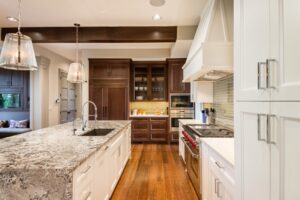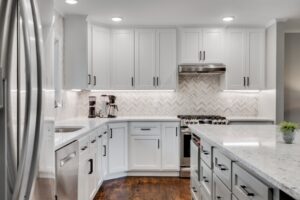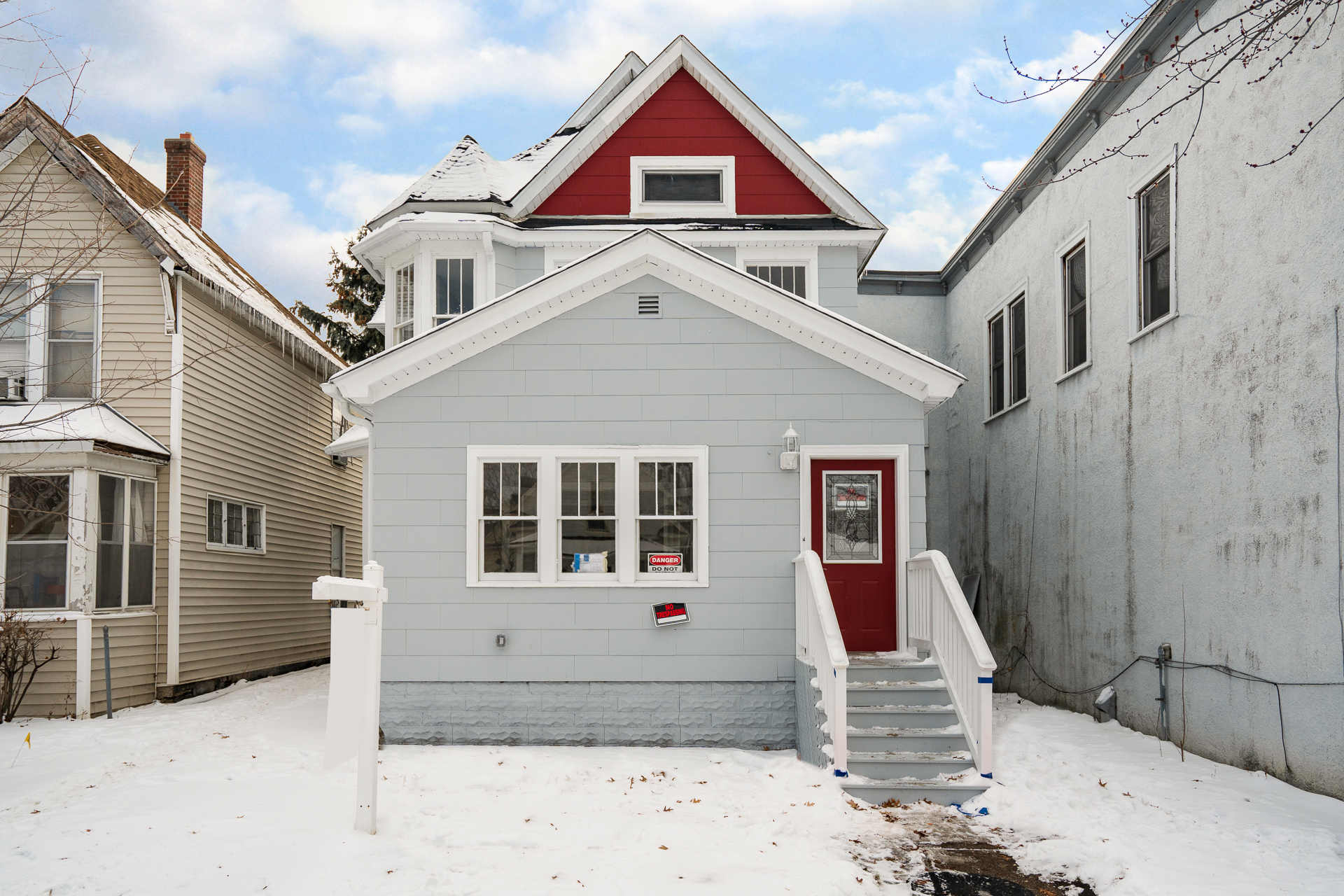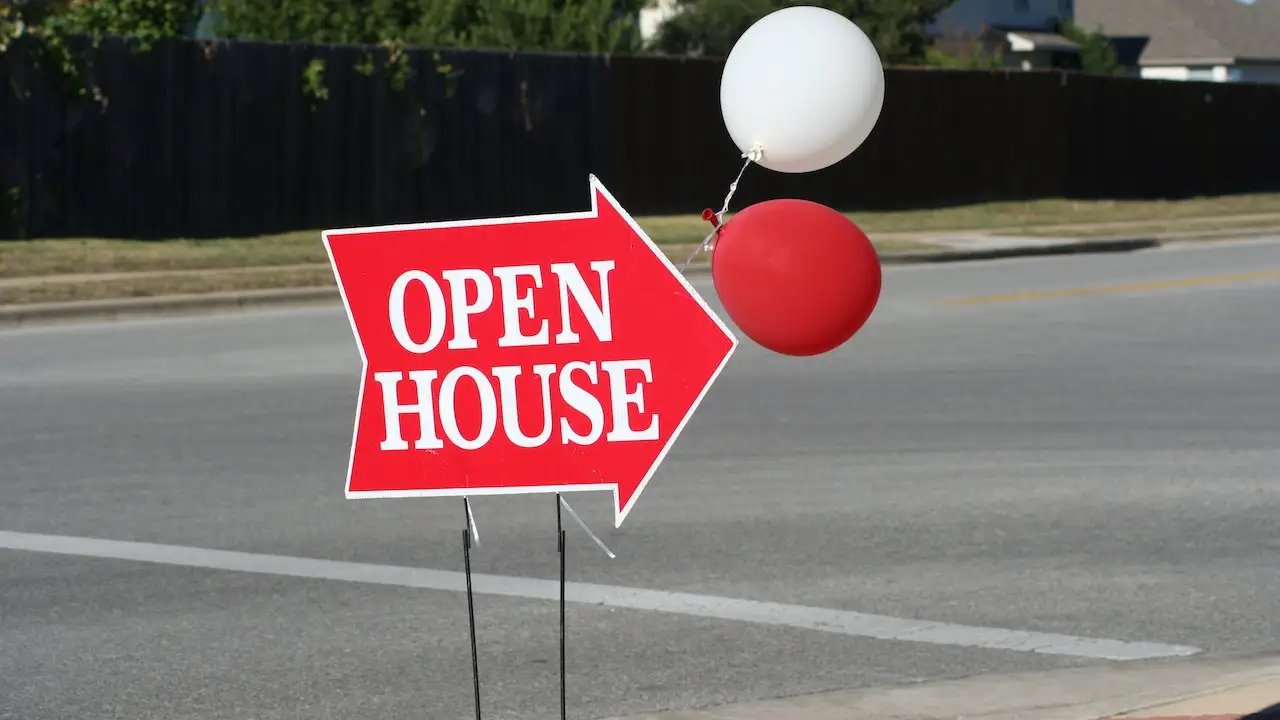Month: June 2022
Project Spotlight – Edmund Ave Project
We had the opportunity to meet Susie in February, 2021. Susie inherited the duplex that she, her mom and brother lived in for a period of time, while her mom dated the duplex owner – John. Even though things did not work out between her mom and John, Susie remained close to him as he became a father figure to her.
Prior to John’s passing, Susie made him a promise to fix the home up so that he may, at some point, be able to move back in. Unfortunately, that never happen, but Susie wanted to stay true to her word and in his memory set out to make this home livable again.
Susie had a large mountain to climb, when dealing with this project, and soon became overwhelmed with it all. Battling with the City of St. Paul and their move to have the home demolished and assess Susie with a $20,000 fine for doing so. Stress overcame Susie so she reached out to a close friend and asked her for help in locating a
company to take on the challenge of the project and the City. Her friend went online and set Susie up on HomeAdvisor (now Angi’s) to help her get into contact with qualified contractors to take on the challenge.
Susie initially met with a company that seemed to discount Susie’s desire to fix up the home so the contractor pushed her off. After meeting with them, Susie met with our Designer, John Zuber. In Susie’s words, John made her feel comfortable. He took the time to speak to her, take photos of the duplex/home and did extensive measurements in order to put a workable plan together. It was at that point, Susie reached out to her friend and said “I have a great feeling about the company I met with – I am going to go with them.”
John went to work and creatively laid out 2 amazing options for Susie, and after costing each option, John went over the design plans with Susie – keep it as a duplex or change it into a single family home. It was determined, due to how the home was zoned, it was best to turn it into a single family home.
When the project was being finalized, Susie ran into another snag – her financing fell through. Susie and Chad, the owner of HomesReinvented by SatinTouch, spoke over the phone and Chad made her an unbelievable offer – “Let us handle that and arrange the project financing.” Susie, feeling defeated, was taken back by the offer from Chad, the owner of HomesReinvented by SatinTouch, and knowing this was an answer from prayer, gladly accepted. The project was now officially underway.
Seeing the home was labeled CAT 3 Abandoned, HomesReinvented by SatinTouch had a few hoops to jump through with the City of St. Paul , but easily maneuvered through them as the City wanted to see the home preserved, just like Susie did. The project took a total of 8 months to complete. Once completed, Chad helped her get the home listed and sold, for $13,000 above the original asking price.
For the full client interview, search out our YouTube Channel at ‘HomesReinvented by SatinTouch – Edmund Ave Home Remodel’. You can also find the audio version on Spotify and Apple Podcast by searching ‘Edmund Ave. Project Home Remodel (complete home remodel).
WHERE CAN I SEE FIREWORKS IN 2022?
FRIDAY, JULY 1ST
RICHFIELD:
Band Shell, 636 E 66th St, Richfield, MN 55423. This year there will be a Laser Light Show in place of fireworks. This may be the best option for small kids or those who are sensitive to loud booms.
SAINT PAUL: CHS Field, 360 N Broadway St, St Paul, MN 55101. Fireworks show after the Saints v. Storm Chasers game (and every Friday home game). You may need tickets for the game to – please check first.
SATURDAY, JULY 2ND
HAM LAKE: Ham Lake Lions Park, 1220 157th Ave NE, Ham Lake, MN. Fireworks at 10pm, after a full day of festival fun.
SUNDAY, JULY 3RD
One of these events is my go-to option when I have to work on the 5th and don’t want to stay up late on the 4th.
BLOOMINGTON: Normandale Lake Park, 5901 West 84th Street, Bloomington, MN 55438. Fireworks at dusk
EDEN PRAIRIE: Sparklefest, Staring Lake Park, 14800 Pioneer Trail. Eden Prairie, Minnesota 55347. Mini Kids Fireworks – No loud booms at this show 6pm-9:45pm.
EDINA: Rosland Park, 4300 W 66th St, Edina, MN 55435. Fifes and drums start at 8pm. First John Sousa Memorial Band concert at 8:45. Fireworks at dusk.
MONDAY, JULY 4TH
MINNEAPOLIS: Red, White & Boom, Downtown Minneapolis Riverfront, Minneapolis, MN 55414.
APPLE VALLEY: Johnny Cake Ridge Park East, Apple Valley, MN 55124. Arrive early for a pre-fireworks family party beginning at 6pm; fireworks at 10pm.
BLAINE: National Sports Center, 1700 105th Ave NE Blaine, MN 55449. Fireworks at 10pm.
CHANHASSEN: Lake Ann Park, 1456 West 78th Street, Chanhassen, MN 55317. Fireworks at 10pm.
COON RAPIDS: Coon Rapids Ice Center, 1100 Crooked Lake Boulevard, Coon Rapids, MN 55433. Fireworks at 10pm.
EAGAN: 1501 Central Pkwy, Eagan, MN 55121. Fireworks at 10pm.
EDEN PRAIRIE: Round Lake Park, 16691 Valley View Road Eden Prairie, Minnesota 55346. Fireworks at 10pm.
EXCELSIOR: Excelsior Commons, 135 Lake St, Excelsior, MN 55331. South Lake Minnetonka – fireworks at 9:45pm.
FOREST LAKE: Lakeside Memorial Park, 95 E Broadway Ave, Forest Lake, MN 55025 – fireworks at 10pm.
LAKEVILLE: Lakeville North High School, 19600 Ipava Ave, Lakeville, MN 55044. Fireworks at 10pm.
MAPLEWOOD: Hazelwood Park, 1663 County Rd C E, Maplewood, MN 55109. Fireworks at 10pm.
ROSEVILLE: Central Park, 2540 Lexington Avenue North, Roseville, MN 55113. Fireworks over Bennett Lake at 10pm.
STILLWATER: Lowell Park, 201 Water St N, Stillwater, MN 55082. Fireworks at dusk.
ST LOUIS PARK: Aquila Park, 3110 Xylon Ave S, St Louis Park, MN 55426 – fireworks at dusk.
WOODBURY: M Health Fairview Sports Center, 4125 Radio Dr., Woodbury, MN 55129. Fireworks at 10pm.
WHITE BEAR LAKE: Manitou Days Fireworks – Memorial Beach, 4980 Lake Ave, White Bear Lake, MN 55110. Fireworks, Flyover & Music 8pm-11pm.
7 Rules of Summer: Kids Edition
Make it a summer they’ll remember — with messy projects, good books and plenty of downtime.
When you’re a kid, there’s nothing quite as thrilling as the first day of summer vacation: three whole months (give or take) of white space on the calendar sprawled out ahead, and no school, homework or teachers in sight. Vow to make the most of these fleeting months with your kids by adopting a few (or all eight) of these rules of summer. They’ve waited all year for this — let’s make it awesome.
1. I will keep schedules and spaces simple
Too much stuff, whether it’s physical clutter or schedule clutter, saps our energy. Set the stage for a simpler summer by keeping some open space in the family schedule and in the home. If you feel inspired to do so, spend a day early in the summer clearing away excess clutter and taking it to a local donation center — your kids may not thank you, but they will notice the difference nonetheless.
2. I will remember that boredom is often a prerequisite for creativity
Whines of “I’m bored!” are no parent’s favorite thing, but if you can endure the complaints without giving in to the demand (for screen time, naturally), chances are the kiddos will find something creative to make or do. Play forts, lemonade stands, DIY board games and homemade comic books — you might be surprised at what your “bored” kids come up with!
3. I will say yes to messy projects
It’s all too easy to say no to kids’ ideas for messy, slightly out-of-hand ideas for projects, whether they fall into the arts and crafts or science and tinkering category. They seem inconvenient, messy and time-consuming — right? But these kinds of things are exactly what makes creative, crafty, open-ended projects such a hit with kids (and such a great alternative to screen time).
To make it easier to say yes, keep an oilcloth or painter’s drop cloth handy to cover the table (and the floor, while you’re at it), and put together a few bins of age-appropriate materials, and then step back and see what your kids create. Bonus: Pick up a few idea-packed books and keep them on a shelf near your art table for inspiration.
4. I will take it outside
One of my favorite things about summer is that anything you can do inside is almost always better done outside. So whether your child is into reading, chalk drawing, craft projects, Lego building or tea parties, bring it all outdoors and enjoy your activity in the fresh air. Just be sure you have enough shade and that everyone stays hydrated.
5. I will let beach gear stand in as decor
If boogie boards and water skis are regular features in your house, don’t fight them — use them. Leaning against a wall, these props of summer make cheerfully beachy decor (and you’ll always know right where they are).
6. I will combat “summer slide” with the power of great books
What teachers call “summer slide” is the tendency for students to lose over the summer some of the strides they made during the past school year. Make summer reading tempting with a comfy reading corner stocked with cushy chairs or beanbags and a selection of child-chosen books (Captain Underpants is a big hit at my house) for independent readers, plus a few more challenging or thought-provoking parent-chosen books for reading aloud or together.
7. I will keep my sense of humor
The beginning of summer is full of good intentions: We will be more laid-back, more creative, more organized, more fun! But of course, as with any time of year, there will be sibling fights that last all day, lost library books and crayon marks on the walls. At times like these, the best practice is to take a deep breath (or 50) and then imagine yourself in the future, when you can transform what feels like utter disaster (permanent marker on new white bedspreads, anyone?) into just another classic story from your little ones’ growing-up years.
8 Things to Learn From Open Houses (Whether or Not You’re Buying)
You can gather ideas, get a handle on the market, find an agent and more
When I was in the process of selling my home (before I became a Real Estate Agent), I was surprised to learn from my real estate agent that open houses are not typically thought to be effective in selling a house. “They’re just for the neighbors” is the going logic. But there are plenty of reasons to attend open houses, whether or not you are looking to buy. Here are eight reasons I tell my clients to check out those weekend open houses near them.
1. Get to know your local housing market before you sell
This is something I wish I had done. Simply attending a few open houses in your neighborhood can give you an education about the housing market in your area beyond what your real estate agent can tell you. The prices of comparable homes, features that are popular and attendance levels at open houses can be valuable data to gather before you put your home on the market.
2. Get ideas for staging
Whether you are looking for a professional to help you stage your home or want to do it yourself, attending open houses is a great way to pick up ideas. Notice wall colors, furniture arrangements, styles and accessories, and use this information as a jumping-off point for your own staging process.
3. Gather design inspiration
On the other hand, if you’ve recently purchased a home and are looking for decorating and remodeling ideas, local open houses can show you what other homeowners have done. It’s especially helpful to look at homes that have floor plans similar to yours.
4. Get comfortable in a home you are considering buying
If you’ve been seriously looking to buy for a while, and you have narrowed your prospects down to a few favorite homes, attending the open house can be a nice way to explore the home further and hear what other open house attendees are saying.
5. Get referrals for pros
If you live in the neighborhood and are looking for a good contractor, designer or other professional, scoping out open houses can be a good way to view that pro’s work firsthand. Most agents have established relationships with pros they know and trust, and are happy to share recommendations. But if you are there without any intention of buying, don’t take up the agent’s time during a busy open house. Wait for a slow stretch and be honest and upfront about what you are looking for.
6. Be a fly on the wall
If you’re thinking of selling your home soon, having some idea of what buyers are looking for in your neighborhood can be incredibly helpful. There’s no need to pretend that you’re a potential buyer while attending open houses. Most agents realize that neighbors like to attend open houses, and it’s best to be honest (or at least quiet) and not waste an agent’s time with pretense.
7. Meet your future agent
Seeing an agent in action is a great way to get a feel for his or her style and consider whether you would work well together. I’ve heard, many times, that people met an agent at an open house they were working. They didn’t really mesh with the house (and weren’t quite ready to buy), but they were impressed with the agent, so when it was time to get serious about house shopping, they looked him or her up.
8. Think of it as a practice run
We’ve all heard stories of the “love at first sight” home purchase. But if you’re buying a house for the first time, it can be a good idea to get in a few practice runs before you begin your search in earnest. Once you’ve viewed 10 or more houses, you won’t be as thrown off by the process.
Tip: Keep a list of must-have items to check at each home you see, and get some practice running through your checklist at open houses before you really begin your search.
Tell us: Have you ever attended an open house when you weren’t really interested in buying?
Share your experience by emailing:
Chad@Buy-Minnesota-Homes.com
5 Kitchen Cabinet Trends Popular With Homeowners Now
Cabinets are a major component in any kitchen. They store, organize and hide kitchen items, and they also make up a large amount of the visual space. In other words, cabinets play a big role in how a kitchen looks and functions. Here, we look at homeowner preferences for kitchen cabinet styles, colors, materials, storage components and more.

1. Most Homeowners Replace All Their Cabinets
We, at HomesReinvented by SatinTouch finds, the majority of renovating homeowners (65%) replace all of their cabinets, while nearly a third (29%) partially replace their cabinets. Only 6% of homeowners do not replace or upgrade their kitchen cabinets.
The 29% of renovating homeowners who choose to partially replace their kitchen cabinets, the majority (65%) refinish the exterior. A quarter of homeowners (25%) add some cabinets, while about the same number (23%) replace only the doors. A fifth of homeowners replace some cabinets, while 14% refinish the interiors.
This Golden Valley, MN kitchen, by HomesReinvented by SatinTouch, has white cabinets with Shaker-style doors, two popular features revealed in the study. The gray island color, chosen by our In-house Designer, helps accent the beauty of our clients new kitchen.
2. Hiring of Cabinetmakers Is on the Rise
Homeowners are increasingly hiring professional cabinetmakers to help create the right cabinetry for their kitchens. Nearly a third of homeowners (31%) hire a cabinetmaker; that percentage increased by 4 points in 2022 compared with 2021. HomesReinvented by SatinTouch has all of their cabinets custom made for their clients.
Why, you may ask? The owner explains why, “They are built to our customers exact needs. The quality and workmanship cannot be beat by a box store item. And finally, the esthetic appeal our cabinets bring to the kitchen, as well as the ability to have them compliment other pieces of furniture in the home in the home. Ultimately, you should see everything come together seamlessly and cohesively.”

3. Shaker-Style Cabinets Shape Most Kitchens
Most homeowners (64%) choose Shaker-style cabinets for their kitchen, followed by flat-panel (17%) and raised-panel (13%).
Many homeowners (43%) choose custom construction, while a little more than a third (35%) go the semicustom route. The vast majority (76%) choose solid wood cabinets, while a fifth (20%) opt for plywood.
More than half of homeowners (57%) add or update a kitchen island during a remodel. Of those, about 1 in 10 (12%) chooses a cabinet door style for the island that’s different than the style of the main cabinets. Shaker style is the most popular contrasting style (43%), followed by raised-panel (23%) and flat-panel (17%).
4. White Dominates for Cabinet Color
White is by far the most popular color when it comes to kitchen cabinets, with about 2 out of 5 homeowners choosing it. But wood is a strong runner-up. When you combine medium- and light-tone wood options, wood cabinets are chosen by nearly 1 in 5 homeowners (19%). Gray is also a popular selection, with 1 in 10 homeowners (10%) choosing it for the past three years.
For this kitchen in Wayzata, MN, our Designer, John Zuber, had the kitchen come to life with white Shaker-style cabinets built for the island and stove, and a custom Shaker-style vent hood. He then designed the rest of the kitchen to feature new walnut cabinets for the refrigerator and double-oven wall, creating a warm and welcoming two-tone style. This was all accomplished by having the kitchen custom built by the team at HomesReinvented.by SatinTouch.
5. Specialty Storage Steps Up
Homeowners are creating storage to organize a variety of kitchen items. A slight majority (51%) integrate organizers for cookie sheets, while a larger majority (63%) add a pullout for waste and recycling.
Homeowners also are adding storage components for things like spices (42%), cutlery (40%), utensils (35%), pots and pans (31%) and small appliances (25%). Many go with specialty storage solutions like deep drawers (40%), Lazy Susans (39%), pullouts or swingouts (38%) and corner pullouts (20%) as well.. A feature that we love including in the custom cabinet we bring to our customers are doggie dish pullouts and buffet pullouts.
Remodeling Activity and Spending Hit Highest Levels in Years
Find out where homeowners are putting their renovation dollars and more details from the 2022 U.S. Houzz & Home Study
Home renovation activity has reached its highest rate since 2018, according to the just-released 2022 U.S. Houzz & Home Study. Renovation spending, up 20% in 2021 compared with the previous year, also has hit its highest rate in four years.
Read on to see what’s going on in home remodeling now, including how homeowners are spending their renovation dollars, how many people are going over their budget and which professionals homeowners are hiring to help with their projects.
Remodeling Activity and Spending Reach Highest Rates Since 2018
A larger share of homeowners (55%) tackled a home renovation project — including kitchen and bathroom remodels — in 2021 compared with previous years (53% in 2020, 54% in 2019 and 54% in 2018).
Decorating projects are popular as well. More than half of homeowners (55%) decorated their homes in 2021.
“Market fundamentals, including limited and aging housing stock, continue to propel the home renovation market,” Marine Sargsyan says. “Homeowners are clearly committed to investing in their homes despite heightened product and material costs driven by supply chain disruptions, and are exploring diverse funding sources. This is especially pronounced among recent homebuyers, who rely heavily on cash from previous home sales to fund their projects and spend significantly more than the national median.”
In 2021, median spend on renovation projects leaped 20% year over year, to $18,000. That follows a 15% jump in median spend from 2019 to 2020, according to Houzz.
Keep in mind that the median means that half of the people spent more and half spent less; it’s not the average. Economists like to reference the median, or midpoint, figure rather than the average because the average can be skewed, can be volatile year over year and can be misleadingly high or low because of a single project that costs far more or less than others.
Higher-budget projects (the top 10% of spending) also contributed to the substantial growth. Spend on these top-end projects increased from $85,000 in 2020 to $100,000 or more in 2021.
The study gathered these median spending costs and other details from more than 67,000 homeowners who responded. The projects reported were handled with the help of pros, were DIY or combined the two approaches.
New Homeowners Spend the Most
Recent homebuyers comprise 10% of homeowners who renovated in 2021. Their median spend on renovation projects is $30,000, nearly double that of short-term ($19,000) and long-term homeowners ($15,000) who renovated. Short-term homeowners are those who have owned their home for one to five years, while long-term homeowners have owned for six years or more.
The number of projects recent homebuyers take on at a single time — an average of three to four rooms, along with updates to home systems such as electrical and plumbing — is potentially a contributing factor to the higher spend.
This new-homeowner group also has the highest spend for higher-budget projects (the top 10% of spending), at $175,000, compared with $100,000 for short-term homeowners and $90,000 for long-term homeowners.
Also, interestingly, while long-term homeowners make up the largest share (60%) of those who renovated in 2021, they have the lowest median spend overall ($15,000), as well as for higher-budget projects ($90,000).
Renovation Spend Increases for Almost All Interior Rooms
Median spend increased for almost all interior room renovations in 2021. Kitchens are the most popular room to update. In 2021, the median spend on kitchen remodels was $15,000, a 25% increase from 2020.
But other rooms saw even bigger spending increases year over year; guest bathrooms: 38%, to $4,400; living rooms: 33%, to $4,000; laundry rooms: 33%, to $2,000; and guest bedrooms: 28%, to $1,275.
Homeowners Plan to Spend More on Projects in 2022
A majority of homeowners (55%) plan to renovate in 2022, a small drop from the 56% who had planned to renovate in 2021. But for the first time since 2018, homeowners plan to spend more on their renovations than in the previous year. The planned median spend for 2022 is $15,000, a 50% increase from $10,000 in each of the past four years.
Common knowledge about supply chain issues and the increased costs of construction materials likely contributed to the rise in planned spending. “However, we know that the activity did not slow down, which suggests that the costs and prices did not impact the decision to renovate on a larger scale in 2021,” Sargsyan says. “We have yet to see what happens in 2022. We are hearing from professionals in our community that the activity is likely to slow down in the next few months, while the spend will continue to increase slightly due to costs.”
Homeowners who will tackle higher-budget projects (those in the top 10% of spend) in 2022 plan to spend $75,000, up from $60,000 in 2021.
Additionally, nearly half of homeowners (46%) plan to decorate in 2022, while almost 3 in 8 homeowners are planning repairs.
Outdoor Renovations Dip, Interior Ones Step Up
Renovations to outdoor spaces hit a peak in 2020, with 57% of homeowners tackling an outdoor project. In 2021, that share dipped slightly, to 54%.
But the share of homeowners remodeling interior rooms rose from 68% in 2020 to 70% in 2021. Updates to home systems and home exteriors saw a similar percentage increase.
As mentioned, outdoor renovations hit a high in 2020. So while updates to yard beds and borders, the most popular outdoor project, dropped 7 points in 2021 compared with the previous year, the share of homeowners making these upgrades (28%) returned to the more stable level seen in 2019.
Outdoor lighting upgrades are also popular (22%). And the share of homeowners adding or updating security systems, such as installing cameras and sensors, has become increasingly popular over the years. In 2021, 17% of renovating homeowners took on outdoor security system projects, compared with only 6% in 2015. And homeowners spent 25% more on home security systems in 2021 than in the previous year.
How Long Does a Remodeling Project Take?
Despite what many TV shows convey, remodeling projects can take months to complete — sometimes over a year. On average, homeowners spent nine or more months on a renovation project in 2021.
A large portion of that time was spent planning. The planning phase for remodels of any interior room was nearly twice as long as the construction phase. For example, homeowners spent an average of 8.6 months planning a kitchen remodel, while the construction phase lasted on average almost five additional months.
Homeowners Rely on Pros More Than in Recent Years
Nearly 9 in 10 homeowners relied on a pro for their remodels or upgrades in 2021. They hired slightly more construction pros in 2021 (38%) than in 2020 (36%), as well as more design-related pros (20%) compared with the previous year (18%).
Recent homebuyers tackled more projects than those who’d been in their home a while, and hired more pros as a result — 93% of them brought on pro help, compared with 88% each for short-term and long-term homeowners.
Specialty service providers were the most frequently hired professionals. This group includes electricians, heating and cooling specialists, plumbers, painters, carpenters, tile workers, masons and countertop pros.
Among the 38% of homeowners who hired construction professionals, general contractors (72%) comprised the largest group, followed by builders (30%), kitchen and bath remodelers (18%) and design-build firms (8%).
Of the 20% of homeowners who hired design-related pros, interior designers (37%) were the most common, followed by architects (29%), landscape architects and designers (29%) and kitchen and bath designers (26%).
The three most commonly hired pros among the 49% of homeowners using specialty service providers were electricians (38%), air conditioning and heating specialists (37%) and plumbers (35%).
Who Stays on Budget and Who Doesn’t
Budgeting for a renovation project can be difficult. The volatility of material costs, surprise discoveries during construction and unplanned scope expansion all can affect a homeowner’s budget. With that in mind, 34% of homeowners went over their remodeling budget in 2021.
That said, two-fifths of homeowners (39%) came in at or under their budget, while 27% reported having no initial budget at all.
Recent homebuyers were more likely to go over budget (45% did so) than short-term (34%) or long-term (31%) homeowners.
Cash Falls, Credit Rises
Cash from savings remained the top method of financing renovation projects in 2021, with 76% of homeowners choosing it. But that’s a 7-point drop from the previous three years, when 83% of homeowners used cash.
Funding with credit cards increased. The share of homeowners financing projects with credit cards rose 6 percentage points, to 35%, in 2021 compared with the previous year.
Recent homebuyers were the most likely to rely on cash from a previous home sale in 2021. And long-term homeowners were the most likely of the three groups to use a secured home loan (17%).







